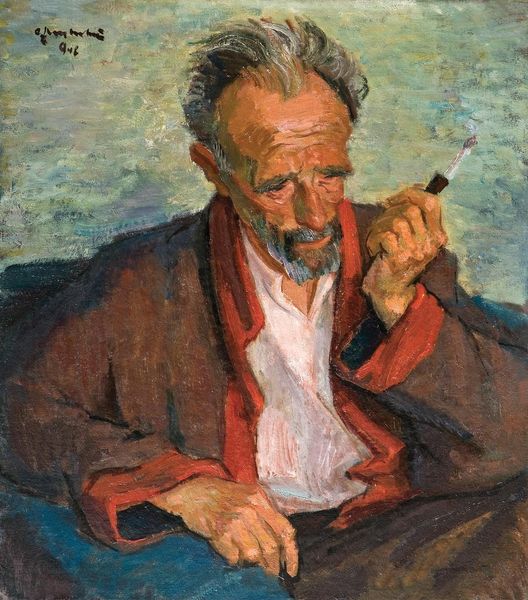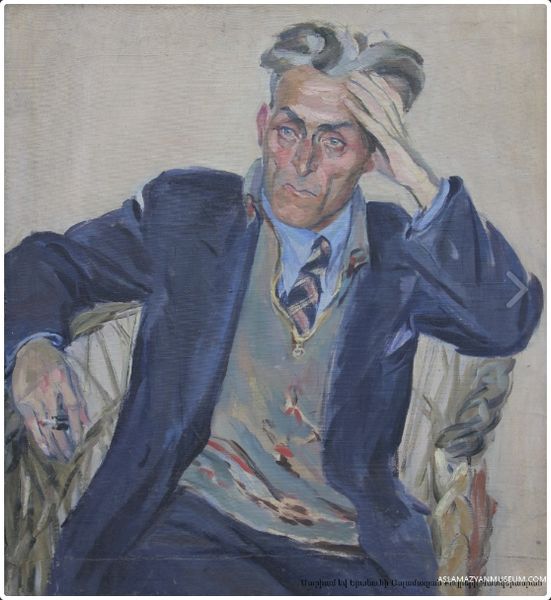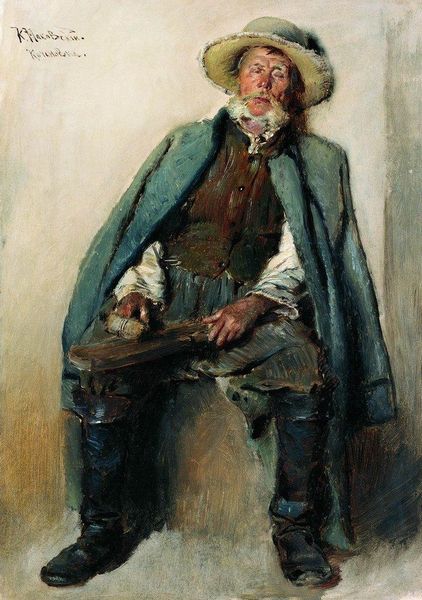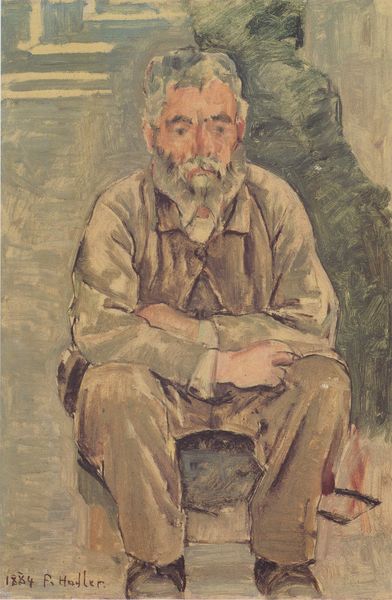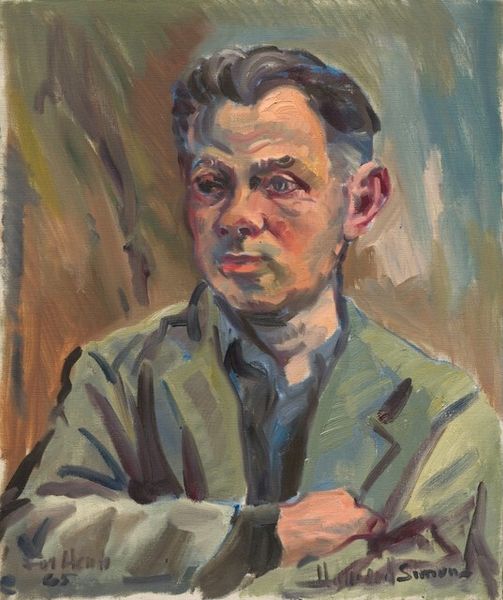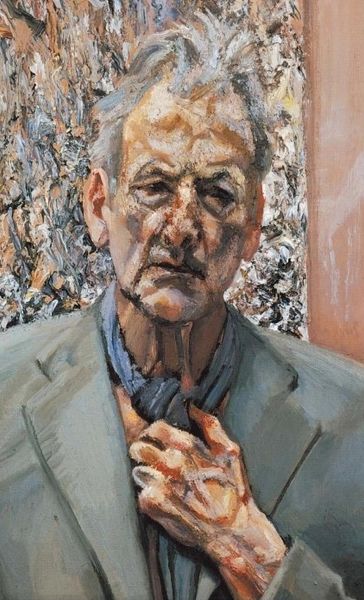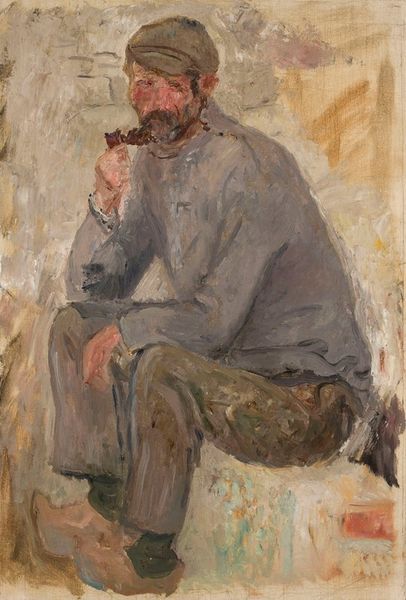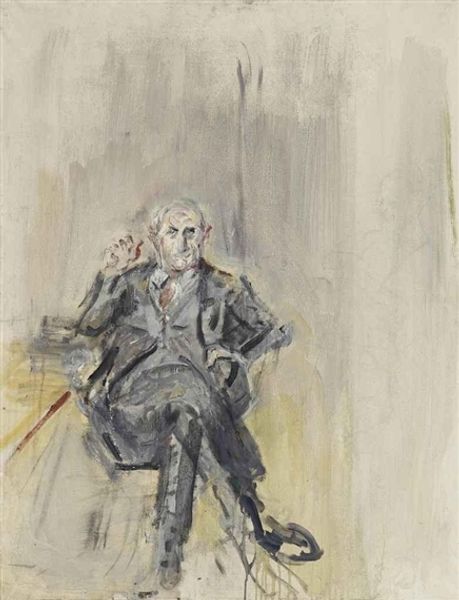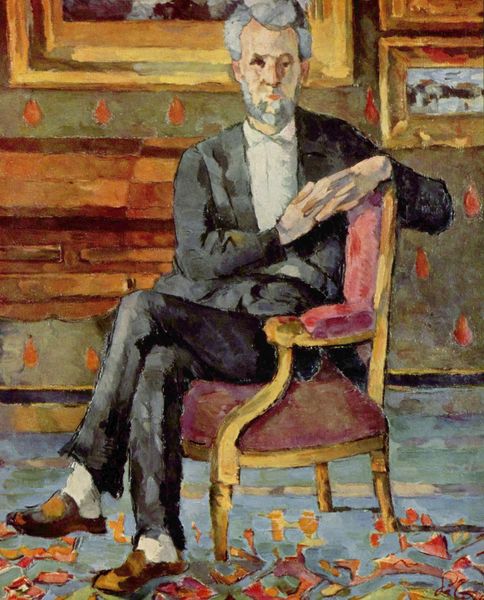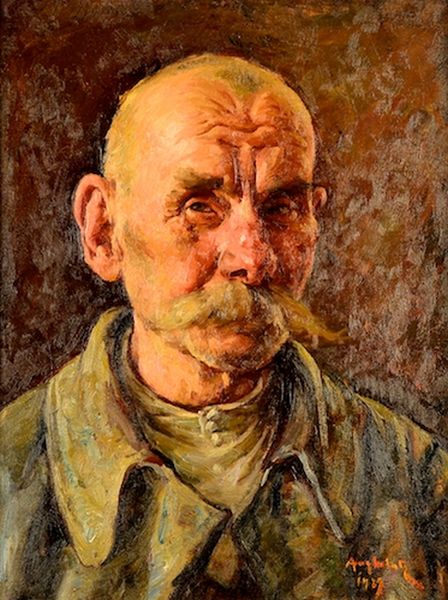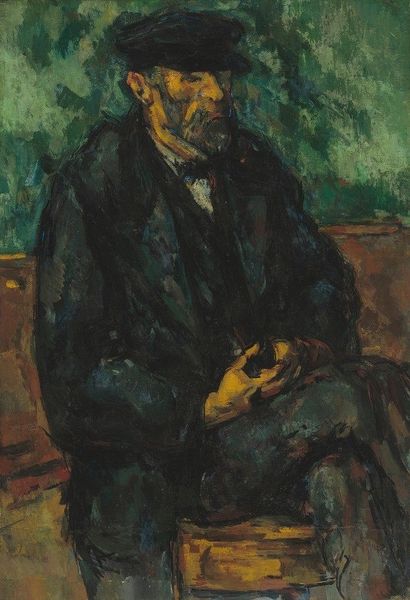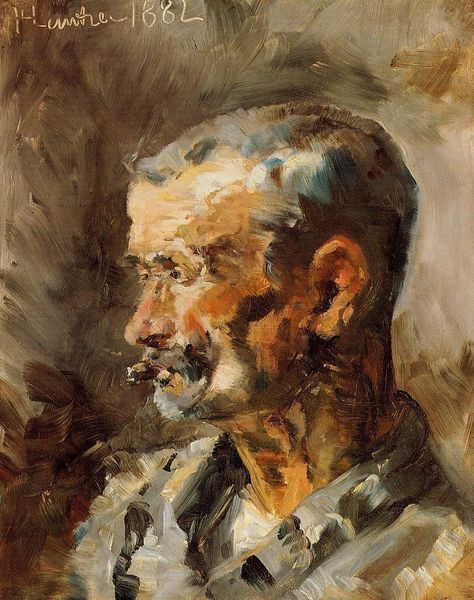
painting, oil-paint
#
portrait
#
painting
#
oil-paint
#
school-of-london
#
figuration
#
modernism
#
realism
Copyright: Lucian Freud,Fair Use
Editor: So, this is Lucian Freud's "Bruce Bernard Seated," painted in 1996 with oil on canvas. There's a quiet intensity to this portrait. The sitter seems almost weighed down. What do you see in this piece, from a historical point of view? Curator: It’s a fascinating portrait when considered within the art world of the late 20th century. Think about the cultural context: the rise of celebrity, the dominance of abstract expressionism, and then the re-emergence of figurative painting. Freud, along with other artists associated with the School of London, consciously rejected abstraction and championed the unflinching representation of the human figure. This act itself was a political statement against the dominant trends in the art market. How does the sitter's presentation strike you in that light? Editor: That makes me think about the role of the model, Bruce Bernard. It’s not just any portrait, is it? His slightly disheveled look is so… deliberate, almost resisting glamour or idealized representation. Curator: Precisely! Freud was known for his brutally honest depictions. Bernard, a renowned photographer himself, clearly understood and perhaps even embraced this. This work, then, engages with a complex visual dialogue— challenging the very conventions of portraiture and the power dynamics inherent in the act of seeing and being seen. To what extent do you think the 'rawness' of Freud's portraits contributed to their market value, or cultural appreciation in his time? Editor: That’s something I had not considered. It's as if his unflinching gaze was a statement against the polished art world itself. It almost created a brand for himself, though he remained deeply serious about his artistic intent. Curator: Absolutely. And think about how the socio-political landscape of Britain—Thatcherism, economic disparity—might have contributed to a yearning for unvarnished truth, reflected in Freud's aesthetic choices. Editor: I hadn’t connected Freud to social commentary so directly, but it makes perfect sense now. There's a resistance embedded within. Curator: Indeed, art rarely exists in a vacuum. Examining the social and political context helps us decipher the artist's motivations, whether conscious or unconscious, and broadens our understanding and appreciation. Editor: Thanks. Looking at "Bruce Bernard Seated" has completely transformed my perception of Freud’s practice, and also portraiture in general. Curator: Glad to hear! It’s important to remember that the most intriguing aspects of art come to the fore when examining the society it was produced in.
Comments
No comments
Be the first to comment and join the conversation on the ultimate creative platform.
